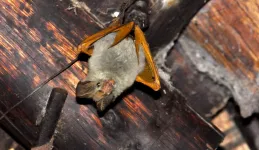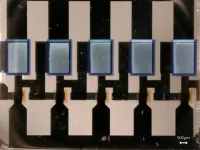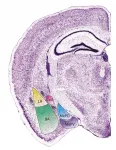US corn and soybean maladapted to climate variations, study shows
2021-07-16
(Press-News.org) URBANA, Ill. - U.S. corn and soybean varieties have become increasingly heat and drought resistant as agricultural production adapts to a changing climate. But the focus on developing crops for extreme conditions has negatively affected performance under normal weather patterns, a University of Illinois study shows.
"Since the 1950s, advances in breeding and management practices have made corn and soybean more resilient to extreme heat and drought. However, there is a cost for it. Crop productivity with respect to the normal temperature and precipitation is getting lower," says Chengzheng Yu, doctoral student in the Department of Agricultural and Consumer Economics (ACE) at the University of Illinois and lead author on the new paper, published in Scientific Reports.
Climate projections indicate a mix of extreme and normal weather patterns in the next 50 years, so crops must perform well under a variety of conditions, explains study co-author Madhu Khanna, ACES distinguished professor of environmental economics in ACE.
"It is not enough to just focus on extreme weather conditions. We can't look at the impacts of climate change in a piecemeal fashion and develop varieties only to cope with certain aspects of it," Khanna states.
Yu, Khanna, and co-author Ruiqing Miao, Auburn University, studied corn and soybean yield from 1951 to 2017 in the eastern part of the U.S., an area where crops can grow without irrigation. Crop yield increased significantly during this period due to a wide range of technological and breeding improvements. But when the researchers isolated the effect of climate-related adaptations, they found significant negative impacts on yield.
While heat and drought tolerance increased yield by 33% for corn and 20% for soybean over this period, the gain was offset by reduced productivity under normal conditions. Overall, maladaptation due to climate-related factors reduced corn and soybean yield by 8% and 67%, respectively, the researchers found.
"There's been this trade-off; crops become better adapted to extreme weather, but less adapted to normal conditions," Khanna says. "Overall, crop yields went up by 100% to 200% over the past decades. We break this down into the components that happened because of climate-related changes, and components that happened irrespective of climate change. And we find the impact of climate-related adaptation has been negative," she explains.
The researchers also projected net effects of climate change adaptation on crop yields by 2050 under a range of warming scenarios. In the most extreme scenarios, weather-adapted variations will perform better. But under less extreme scenarios varieties that perform well in normal climate would be more productive.
Khanna and Yu conclude that crop breeders should focus on developing crop varieties for diverse weather patterns. Flexibility is important for agricultural producers to be well prepared for future conditions.
"There will be a very significant reduction in crop yield for both corn and soybean over the next 50 years under some extreme warming scenarios, even though the crops are supposedly adapted to extreme conditions. There's overall maladaptation, because the crops are not fully adapted to every possible combination of extreme and normal conditions. And the overall impact is going to be very negative," Khanna says. "We need to drastically change how we're adapting our crops so that they're better prepared for the mix of conditions we are likely to encounter in the following years."
INFORMATION:
The Department of Agricultural and Consumer Economics is in the College of Agricultural, Consumer and Environmental Sciences, University of Illinois.
The paper, "Maladaptation of U.S. corn and soybeans to a changing climate," is published in Nature Scientific Reports. [https://doi.org/10.1038/s41598-021-91192-5]. Authors are Chengzheng Yu, Ruiqing Miao, and Madhu Khanna.
Funding for this research was provided by a USDA National Institute of Food and Agriculture Hatch grant.
[Attachments] See images for this press release:

ELSE PRESS RELEASES FROM THIS DATE:
2021-07-16
New research led by the University of Cambridge suggests that autism can be detected at 18-30 months using the Quantitative Checklist for Autism in Toddlers (Q-CHAT), but it is not possible to identify every child at a young age who will later be diagnosed as autistic. The results are published today in The BMJ Paediatrics Open.
The team at the Autism Research Centre in Cambridge conducted a prospective population screening study of nearly 4,000 toddlers using a parent-report instrument they developed, called the Quantitative Checklist for Autism in Toddlers (Q-CHAT). Toddlers were screened at 18 months and followed up at 4 years.
The ...
2021-07-16
Northwestern University engineers have developed the first full, three-dimensional (3D), dynamic simulation of a rat's complete whisker system, offering rare, realistic insight into how rats obtain tactile information.
Called WHISKiT, the new model incorporates 60 individual whiskers, which are each anatomically, spatially and geometrically correct. The technology could help researchers predict how whiskers activate different sensory cells to influence which signals are sent to the brain as well as provide new insights into the mysterious nature of human touch.
The research was published last week in the Proceedings ...
2021-07-16
Bat conversations might be light on substance, according to researchers from the University of Cincinnati.
Echoes from bats are so simple that a sound file of their calls can be compressed 90% without losing much information, according to a study published in the journal PLOS Computational Biology.
The study demonstrates how bats have evolved to rely on redundancy in their navigational "language" to help them stay oriented in their complex three-dimensional world.
"If you can make decisions with little information, everything becomes simpler. That's nice because you don't need a lot of complex neural machinery to process and store that information," study co-author Dieter Vanderelst ...
2021-07-16
Physicists of the Technische Universität Dresden introduce the first implementation of a complementary vertical organic transistor technology, which is able to operate at low voltage, with adjustable inverter properties, and a fall and rise time demonstrated in inverter and ring-oscillator circuits of less than 10 nanoseconds, respectively. With this new technology they are just a stone's throw away from the commercialization of efficient, flexible and printable electronics of the future. Their groundbreaking findings are published in the renowned journal "Nature Electronics".
Poor performance is still impeding the commercialization ...
2021-07-16
Researchers at Vanderbilt University Medical Center (VUMC) and the Baylor College of Medicine in Houston, Texas, have taken a big step toward developing targeted treatments and vaccines against a family of viruses that attacks the gastrointestinal tract.
Each year in the United States circulating strains of the human norovirus are responsible for approximately 20 million cases of acute gastroenteritis. Hallmark symptoms include severe abdominal cramping, diarrhea and vomiting.
Several vaccine candidates are in clinical trials, but it is unclear how effective they will be, given the periodic emergence of novel norovirus variants. Developing ...
2021-07-16
All cancers fall into just two categories, according to new research from scientists at Sinai Health, in findings that could provide a new strategy for treating the most aggressive and untreatable forms of the disease.
In new research out this month in Cancer Cell, scientists at the Lunenfeld-Tanenbaum Research Institute (LTRI), part of Sinai Health, divide all cancers into two groups, based on the presence or absence of a protein called the Yes-associated protein, or YAP.
Rod Bremner, senior scientist at the LTRI, said they have determined that all cancers ...
2021-07-16
WHAT:
A new study published in Nature Communications suggests that gene therapy delivered into the brain may be safe and effective in treating aromatic L-amino acid decarboxylase (AADC) deficiency. AADC deficiency is a rare neurological disorder that develops in infancy and leads to near absent levels of certain brain chemicals, serotonin and dopamine, that are critical for movement, behavior, and sleep. Children with the disorder have severe developmental, mood dysfunction including irritability, and motor disabilities including problems with talking ...
2021-07-16
LOS ALAMOS, N.M., July 15, 2021-- Using a D-Wave quantum-annealing computer as a testbed, scientists at Los Alamos National Laboratory have shown that it is possible to isolate so-called emergent magnetic monopoles, a class of quasiparticles, creating a new approach to developing "materials by design."
"We wanted to study emergent magnetic monopoles by exploiting the collective dynamics of qubits," said Cristiano Nisoli, a lead Los Alamos author of the study. "Magnetic monopoles, as elementary particles with only one magnetic pole, have been hypothesized by many, and famously by Dirac, but have proved elusive so far."
They realized an artificial spin ice by using the superconducting qubits of the quantum machine as a magnetic building block. Generating magnetic materials ...
2021-07-16
Great leaps in science and technology have been propelled by recent advances in seeing fast evolving physical phenomena, as they happen. Femtosecond lasers from the infrared to the X-ray region have enabled us to 'watch', in real time, atoms dance in molecules and solids on femtosecond and picosecond timescales. Watching such fascinating motions not just in real time but at the spatial locations where they happen, is a bigger challenge.
It is precisely this advance that has been made by a team of researchers at the Tata Institute of Fundamental Research, Mumbai, York University and the Rutherford Appleton Laboratories, UK [1]. They exploded a solid surface with an ultrahigh ...
2021-07-16
Fear is an important reaction that warns and protects us from danger. But when fear responses are out of control, this can lead to persistent fears and anxiety disorders. In Europe, about 15 percent of the population is affected by anxiety disorders. Existing therapies remain largely unspecific or are not generally effective, because the detailed neurobiological understanding of these disorders is lacking.
What was known so far is that distinct nerve cells interact together to regulate fear responses by promoting or suppressing them. Different circuits of nerve cells are involved in this process. A kind of "tug-of-war" takes place, with one brain circuit ...
LAST 30 PRESS RELEASES:
[Press-News.org] US corn and soybean maladapted to climate variations, study shows






